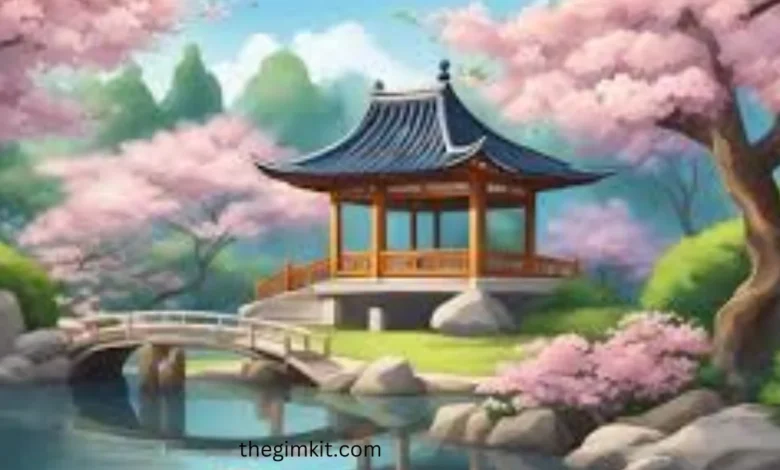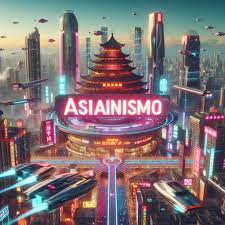Exploring the Rich History and Cultural Significance of Asianismo

Introduction to Asianismo and its Definition
Welcome to a fascinating adventure through the geographical regions of Asianismo – a cultural motion that resonates with wealthy history, artistic expression, and profound significance. Join us as we delve into the origins, key figures, evolution, and effect of Asianismo on artwork, literature, tune, politics, and society. Discover how this movement maintains to captivate hearts and minds with its enduring relevance in cutting-edge instances. Let’s explore the vibrant tapestry of Asianismo together!
The Origins of Asianismo
Asianismo, a cultural movement that celebrates the rich background and diversity of Asian cultures, has its roots deeply embedded in history. The origins of Asianismo can be traced again to the early twentieth century when artists and thinkers in Asia began thinking of Western dominance in artwork and tradition.
Inspired by a preference to reclaim their identities and narratives, those visionaries sought to sell cohesion among Asian countries while embracing their particular traditions and values. Figures like Jose Rizal from the Philippines, Rabindranath Tagore from India, and Sun Yat-sen from China performed pivotal roles in shaping the ideology of Asianismo.
Their thoughts resonated with many across the continent, leading to a gradual unfolding of the motion at some point in Asia. As it won momentum, Asianismo started influencing various inventive expressions consisting of literature, music, and visual arts.
The essence of Asianismo lies in fostering a feeling of pleasure in one’s historical past while selling cohesion amongst various cultures. This ethos continues to encourage creatives nowadays as they discover new methods to have fun in Asia’s vibrant tapestry of traditions.
Key Figures and Influences Inside the Movement
Asianismo was no longer just a motion; it changed into a meeting of high-quality minds and influential figures who formed its path. Visionaries like Jose Rizal, Rabindranath Tagore, and Sun Yat-sen played pivotal roles in championing the ideals of Asianismo. Their writings, philosophies, and actions stimulated generations to embody their cultural heritage with pleasure and resilience.
Artists which include Okakura Tenshin and Yokoyama Taikan infused traditional Asian aesthetics into their works, paving the manner for a renaissance in artwork throughout the continent. Musicians like Ananda Samarakoon combined conventional melodies with cutting-edge harmonies to create soul-stirring compositions that resonated with listeners globally.
The impacts of these key figures transcended borders and ignited a cultural revolution that continues to reverberate over time. They had been the guiding lighting fixtures of Asianismo, illuminating paths in the direction of unity, creativity, and progress for all who dared to dream beyond obstacles.
Spread and Evolution of Asianismo

The unfolding and evolution of Asianismo was a fascinating journey, encompassing numerous artwork bureaucracy, ideologies, and cultural movements. Initially rooted in the Philippines during the early twentieth century, Asianismo progressively won traction throughout Asia and beyond. Influenced using diverse cultures and traditions, it started to tackle new dimensions as artists and thinkers interpreted its ideas in particular ways.
As Asianismo continued to evolve, it tailored to changing social landscapes and artistic tendencies. Artists experimented with one-of-a-kind mediums and techniques to carry their interpretation of Asian identity and historical past. This brought about a rich tapestry of artworks that pondered the complex interplay between lifestyle and modernity.
With advancements in era and verbal exchange, the reach of Asianismo accelerated globally. Through exhibitions, courses, and online structures, fanatics from around the world were able to interact with this dynamic motion. Today, Asianismo continues to inspire creativity and speak amongst artists in search of discovering their cultural roots in a modern-day context.
Impact on Art, Literature, and Music
Asianismo has left a profound mark on diverse kinds of innovative expression, which includes artwork, literature, and song. In the realm of art, artists stimulated by Asianismo have integrated topics from Asian cultures into their works, growing pieces that mirror a fusion of East and West. This motion has caused the emergence of unique creative patterns that challenge conventional norms and have fun diversity.
In literature, writers inspired by way of Asianismo have delved into narratives that discover cultural identification, migration studies, and diaspora. Through their stories and poetry, they convey to mild the complexities of dwelling between unique worlds whilst celebrating the richness of Asian heritage.
Music too has been converted via the spirit of Asianismo. Musicians have infused conventional sounds with contemporary factors to create harmonies that resonate with audiences across borders. From conventional folk tunes to present-day compositions, the influence of Asianismo can be heard in melodies that evoke an experience of harmony amidst range.
Intersection with Political and Social Movements
Asianismo emerged as more than just a creative movement; it intertwined with the political and social panorama of its time. The emphasis on Asian identity and delight resonated deeply with anti-colonial sentiments, fueling nationalist moves throughout the region.
In countries like the Philippines, India, and Indonesia, Asianismo became an image of resistance towards Western domination and cultural imperialism. Artists and intellectuals used their work to assign colonial narratives and reclaim their cultural and historical past.
The movement’s fusion of artwork, literature, and activism inspired an era to question energy structures and call for self-dedication. Through exhibitions, guides, and performances, Asianismo fostered harmony among various communities preventing autonomy.
As political tensions rose in Asia at some stage in that era, Asianismo provided a platform for innovatively expressing dissent. Its legacy keeps current artists engaged with topics of identity politics and decolonization efforts globally.
Contemporary Relevance and Preservation of Asianismo
In the state-of-the-art increasing number of globalized internationals, the concepts of Asianismo are preserved to hold tremendous relevance and importance. The movement serves as a reminder of the wealthy cultural heritage and diversity present in Asia, encouraging speech and appreciation among one-of-a-kind cultures.
Asianismo additionally performs an essential function in retaining traditional artwork paperwork, literature, and music that are susceptible to being overshadowed by Western effects. By promoting these elements, Asianismo contributes to the upkeep of precise cultural identities within the vicinity.
Moreover, Asianismo has stimulated modern artists and creators who draw suggestions from its values of cohesion and solidarity throughout borders. Through numerous mediums which include film, style, and design, the spirit of Asianismo lives on in present-day expressions of creativity.
As we navigate through complicated social issues and challenges, embracing the essence of Asianismo can foster understanding…
Conclusion:
Asianismo has left an indelible mark on the cultural landscape of Asia, shaping artwork, literature, song, and societal actions. From its humble beginnings to its full-size effect across the continent, Asianismo continues to resonate with audiences these days. As we rejoice in the rich records and cultural importance of this movement, allow us to not forget to preserve and honor its legacy for destiny generations to comprehend and draw concepts from. Let Asianismo function as a reminder of the electricity of solidarity in variety and the splendor that emerges whilst exceptional cultures come collectively in harmony.
Read More: Exploring the Rich History and Culture of Troshilly




